Tricentenaire de l’expédition de Jacob Roggeveen en Polynésie
L’explorateur néerlandais Jacob Roggeveen est né à Middelbourg le 1er février 1659 et décède le 31 janvier 1729 dans cette même ville des Pays-Bas.
Il débute une carrière de notaire puis après un doctorat en droit à l’université de Harderwijk, il part en 1707 en tant que juriste à Batavia (aujourd’hui Jakarta).
En 1715, il revient à Middelbourg pour travailler sur le projet d’expédition, conçue par son père Arend Roggeveen, avec son frère Jan.
Ayant servi dans la Compagnie hollandaise des Indes orientales, il obtient en 1721 de la Compagnie des Indes occidentales, la direction d’une expédition à la découverte de la mythique Terra Australis.
Roggeveen arme trois navires et recrute des officiers sous son commandement : Den Arend (cpt Jan Koster), le Thienhoven (cpt Cornelis Bouman) et l’Africaansche Galey (cpt Roelof Rosendaal). L’expédition quitte le port de Texel le 1er août 1721.
Après avoir traversé l’Atlantique et longé les côtes d’Amérique du sud, il passe le Cap Horn et entre dans l’Océan Pacifique en janvier 1722.
Roggeveen fait sa première découverte le 5 avril 1722. Ce dimanche de pâques, il aborde les côtes de cette petite île qu’il nomme ainsi « Île de Pâques ».
Forcé par le mauvais temps, le navigateur hollandais part vers l’ouest, cap sur les îles Tuamotu, surnommées alors « Archipel Dangereux ». C’est ainsi que l’Africaansche Galey fait naufrage sur le récif de l’atoll de Takapoto en mai 1722. Lors du désastre il réussit à sauver quelques vivres et une partie de l’équipage (dont 5 marins profiteront pour déserter). L’équipage affecté par ce désastre, décide de rester au large des îles, découvrant à distance les autres îles des Tuamotu (Arutua, Apataki, Rangiroa).
Il aborde la première île haute, Makatea, et décide de jeter l’ancre pour regagner des forces et refaire le plein en eau et vivres. Malheureusement, les habitants effrayés, repoussent les marins à coups de pierres du haut de falaises escarpées.
Le 06 juin, Roggeveen est le premier européen à découvrir l’île de Maupiti et Bora Bora surnommée « la perle du Pacifique ».
Apres avoir traversé la Polynésie, Roggeveen décide de continuer vers l’ouest malgré le manque de vivres et la fatigue de l’équipage atteint par le scorbut.
L’expédition atteint les Îles Samoa, la Nouvelle-Guinée et Java, les navires sont alors confisqués pour avoir violé les accords de monopole de la compagnie rivale et Roggeveen est arrêté. Enfin relâché par la justice de La Haye, il regagne son pays où il prendra sa retraite.
Fare Rata, la Poste de Polynésie est heureuse de partager cette extraordinaire expédition de Jacob Roggeveen en Polynésie.
Tricentenary of the expedition of Jacob Roggeveen in Polynesia
The Dutch explorer Jacob Roggeveen was born in Middelburg on February 1, 1659 and died on January 31, 1729 in the same city of the Netherlands.
He began a career as a notary and then after a doctorate in law at the University of Harderwijk, he left in 1707 as a lawyer in Batavia (now Jakarta).
In 1715, he returned to Middelburg to work on the expedition project, conceived by his father Arend Roggeveen, with his brother Jan.
Having served in the Dutch East India Company, he obtained in 1721 from the West India Company, the handling of an expedition to discover the mythical Terra Australis.
Roggeveen armed three ships and recruited officers under his command: the Den Arend (Cpt Jan Koster), the Thienhoven (Cpt Cornelis Bouman) and the Africaansche Galey (Cpt Roelof Rosendaal). The expedition left the port of Texel on August 1, 1721.
After crossing the Atlantic and along the coasts of South America, he passed Cape Horn and entered the Pacific Ocean in January 1722.
Roggeveen made his first discovery on April 5, 1722. This Easter Sunday, he approaches the shores of this small island, which he calls «Easter Island».
Forced by bad weather, the Dutch navigator set off for the west, heading for the Tuamotu Islands, then known as the «Dangerous Archipelago». Thus the Africaansche Galey sank on the reef of the Takapoto atoll in May 1722. During the disaster he managed to save some food and a part of the crew (5 sailors will take the opportunity to run away). The crew affected by this disaster, decides to stay away from the islands, discovering remotely the other islands of the Tuamotu (Arutua, Apataki, Rangiroa).
He approaches the first high island, Makatea, and decides to drop anchor to regain strength and refuel in water and food. Unfortunately, the frightened inhabitants, push back the sailors with stones from the top of steep cliffs.
On 06 June, Roggeveen was the first European to discover the island of Maupiti and Bora Bora named «the pearl of the Pacific».
After crossing Polynesia, Roggeveen decided to continue west despite the lack of food and the fatigue of the crew reached by scurvy.
The expedition reached the Samoa Islands, New Guinea and Java, the ships were then confiscated for having violated the monopoly agreements of the rival company and Roggeveen was arrested. Finally released by the justice of La Haye, he returned to his country where he will retire.
Fare Rata, the Polynesia Post Office is pleased to share this extraordinary expedition of Jacob Roggeveen to Polynesia.
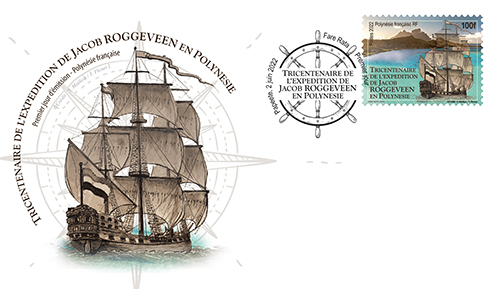

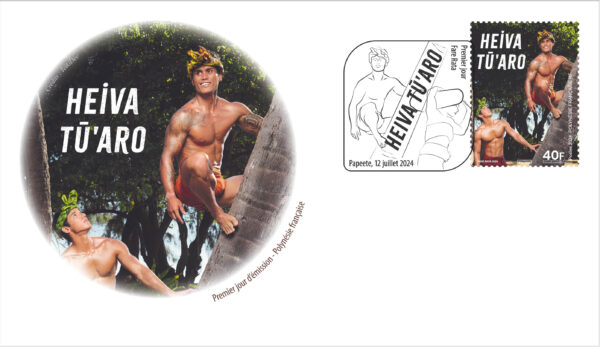
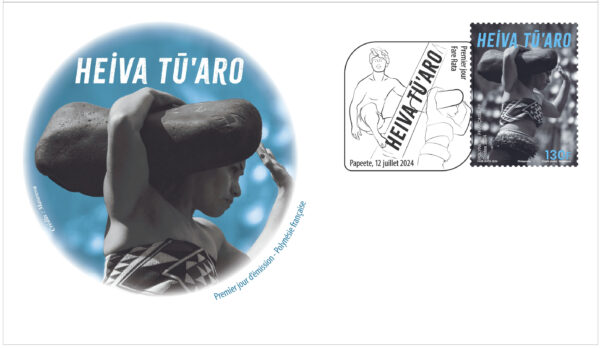

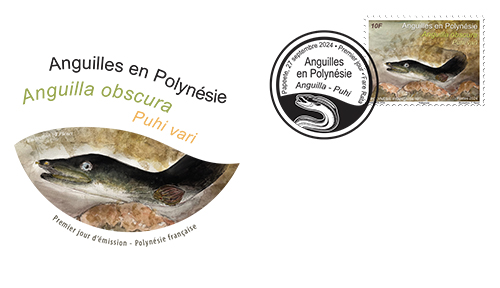
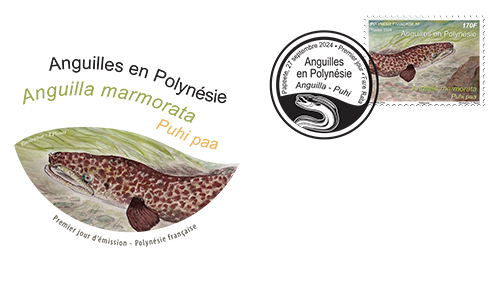
Reviews
There are no reviews yet.